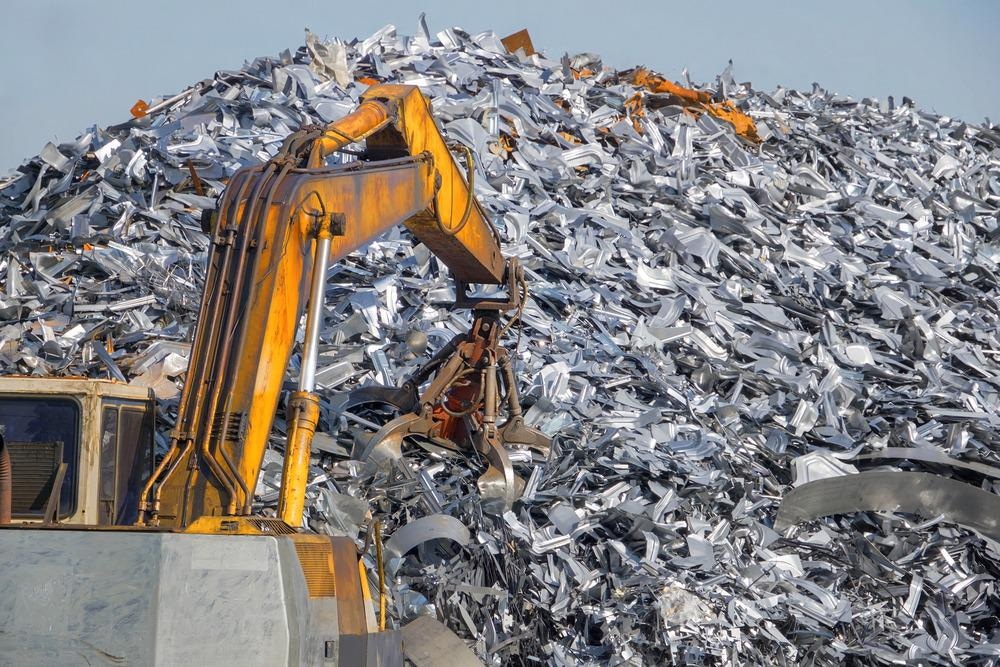In a recent study published in the journal Material Today Proceedings, researchers from Nigeria studied the properties of an Al-20Zn Alloy developed with steel machining chips for aerospace and automobile applications.

Study: Mechanical and damping behavior of Al-20Zn based composites reinforced with recycled steel particles. Image Credit: oneSHUTTER oneMEMORY/Shutterstock.com
Advanced Materials for Industrial Application
Advanced structural materials for aerospace and automotive applications are an area of focus for researchers because of cost and sustainability factors. Additionally, the application of advanced materials in structures reduces greenhouse gas emissions due to a variety of factors. Metallic materials such as aluminum, magnesium, and titanium are commonly used to develop advanced structural materials for aerospace and automotive applications.
Due to the low cost of production and high volume of availability, Al is widely used in these industries. In addition to this, Al has high strength, toughness, and damping properties that are often critical for efficient and safe service performance in aircraft and automobiles. Al mixed with other materials results in the development of aluminum matrix composites (AMCs) that is commonly used.
In the present study, the properties of the Al-20Zn alloy reinforced with recycled steel machining chips have been studied in detail for industrial applications.
Methodology
Steel chips were obtained by researchers through a drilling operation on medium carbon steel and used as reinforcements for the samples. The mass required for Al, Zn, and steel particles was determined using charge calculation, which was based on variables such as volume of the mold cavity and shrinkage allowance. Further, the samples were cast in the gas-fired furnace at 700 oC to develop AMC.
Three different samples were prepared: pure Al-20Zn alloy, Al-20Zn matrix with 6% steel particles, and Al-20Zn matrix with 8% steel particles as reinforcements.
The hardness of the composites was determined using the Vickers hardness testing machine. A universal testing machine was used to evaluate the tensile properties of the composites. The circumferential notch sample tensile testing method was used to assess the fracture toughness of composites. The damping properties tests were carried out on a dynamic mechanical analyzer in a three-point bending mode, and microstructural analysis was conducted using a scanning electron microscope (SEM) system.
Results
The micrographs of the Al-20Zn-based composites and Al-20Zn alloy based on SEM showed that the reinforcing particles were visible and delineated in Al-20Zn composites.
The hardness values increased when steel particles were added to the Al20Zn alloy. The addition of 6% and 8% steel particles to Al-20Zn resulted in a 45% and 74% hardness improvement, respectively. The reason for the increment in hardness is the higher volume fraction of steel substitutes in the Al-Zn matrix. Furthermore, the steel particles aid in hardening by hard barriers to dislocation motion.
The universal tensile strength (UTS) increased as the weight percent of steel particles increased. Compared to the unreinforced Al-20Zn alloy, the addition of 6% and 8% steel particles as reinforcements in the Al-20Zn resulted in a 9% and 18% increment in UTS. The increased strength can be attributed to several strengthening mechanisms associated with the interaction of steel particles with aluminum.
More from AZoM: What is Femtosecond Laser-Based 3D Printing?
The specific strength of the composites increased marginally as the weight percent of steel particles increased. However, the percentage elongation results showed that the addition of steel particles significantly reduced ductility. It must be noted that the decrease in ductility is a result of the increase in matrix discontinuity developed by interfaces in the Al-20Zn based composite.
The fracture toughness study of the Al-20Zn alloy and Al-20Zn based composites showed that the fracture toughness decreased as the weight percent of steel particles increased. Additionally, the damping properties of the developed composite were comparable to the Al-20Zn alloy till 100 oC.
For the test temperature range of 30 – 200 oC, the storage modulus of the Al-20Zn-based composites reinforced with steel particles was higher than the unreinforced Al-20Zn alloy. These results showed an improvement in the storage modules of the developed composite.
Conclusions
With increased steel particles, the composites' hardness, UTS, and specific strength increased gradually due to particle and interface strengthening. However, reductions in percentage elongation and fracture toughness were observed. At temperatures up to 100 oC, the damping capacity of the Al-Zn-based composites was comparable to that of the Al-20Zn alloy. Additionally, the results reported by the researchers were within the range for metallic material reinforced AMCs reported in the literature.
Compared to the unreinforced Al-Zn alloy, the composites developed by the researchers had improved strength, toughness, and damping properties; hence they can be used to develop the stress-bearing component.
Disclaimer: The views expressed here are those of the author expressed in their private capacity and do not necessarily represent the views of AZoM.com Limited T/A AZoNetwork the owner and operator of this website. This disclaimer forms part of the Terms and conditions of use of this website.
Source:
Kenneth Kanayo Alaneme and E.O. Aikulola, Mechanical and damping behavior of Al-20Zn based composites reinforced with recycled steel particles, Materials Today: Proceedings, https://www.sciencedirect.com/science/article/pii/S2214785322006691?via%3Dihub